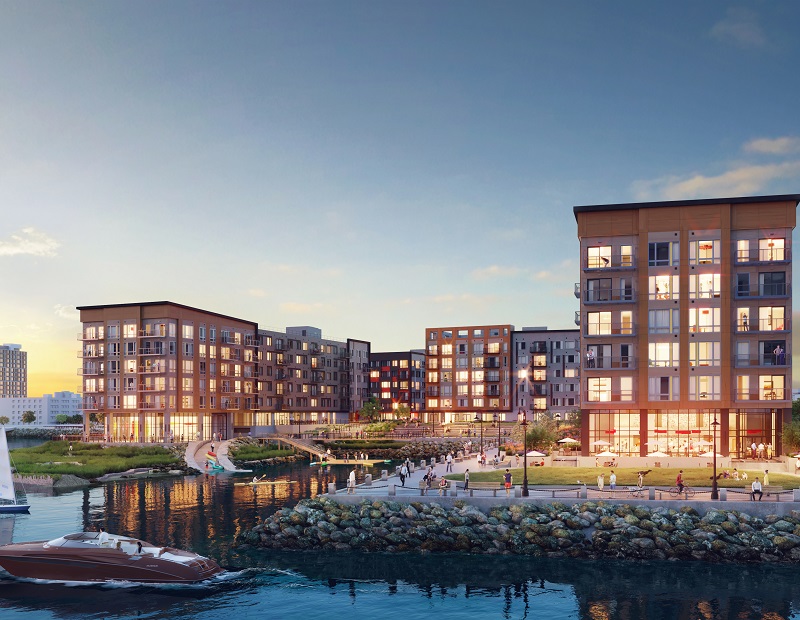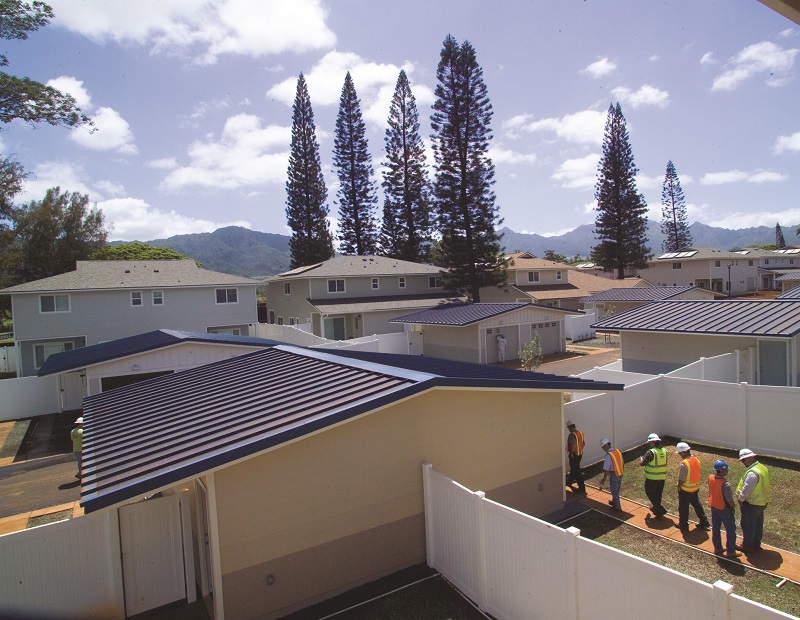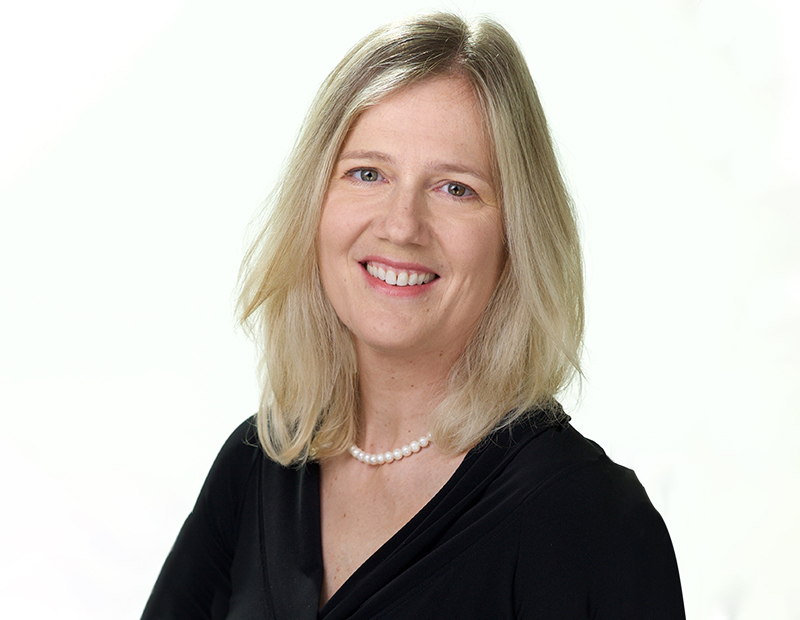Lendlease and the Green Revolution
What does building for the future entail? The company's Eleni Reed highlights its innovative energy solutions for maintaining value in new developments for the longer term.
Lendlease has put sustainability at the core of its goal to create the best places―a commitment that is now its motto. As part of its push for a greener tomorrow, the construction company and investment manager implements innovative energy solutions across its extensive portfolio, including the generation of renewable energy, while also focusing on the well-being of residents and tenants.
“At Horizon Uptown in Aurora, Colo., Lendlease is pioneering a groundbreaking approach to integrating health and wellness at the community level,” Eleni Reed, head of Sustainability, Americas for Lendlease, told Commercial Property Executive. Reed details the Aurora project and what is on a top green contractor’s agenda in the interview below.
When and how did Lendlease start to invest in energy solutions?
Reed: We have put sustainability at the heart of our business since the beginning in 1958. It is a fundamental part of our vision to create the best places. We recognize that the benefits of sustainable development must extend beyond a reduction in the environmental footprint to deliver places that are more operationally efficient, focus on human health and wellness, and are designed and built to be more resilient to maintain value over the longer term.
As it relates specifically to energy, Lendlease has been a leader in driving energy efficiency and reducing carbon emissions across the 18 military housing communities we serve, comprising more than 40,000 homes. Our work in this area has gained recognition from the Department of Energy’s Better Buildings Challenge. Ground and rooftop solar arrays across our sites generate enough energy to power the equivalent of 4,700 homes for one year. Lendlease reduced the energy intensity of this portfolio by over one third since 2008 by greening existing homes, building new homes to green standards, engaging residents and leveraging innovative technology.
What role does sustainability play in Lendlease’s development activity?
Reed: In our development business, sustainability is also built into our approach. In Boston, we are developing Clippership Wharf, a mixed-use development that is pioneering the integration of resiliency into waterfront development in the East Boston neighborhood. It will include sustainable elements such as future-proofing buildings by raising the residential units well above the flood plain and surrounding roadways and regenerating the coastal habitat through a living shoreline, including the introduction of native plantings and wave-dissipating features that will help to accommodate many decades of potential sea level rise. The project, which will generate enough solar energy to power the equivalent of approximately 28 homes a year, is also targeting a LEED for Homes Midrise certification at the Platinum level.
In Aurora, Colo., we are developing a master-planned community that will feature green apartments that are both environmentally efficient and enhance resident health and well-being. We are also pioneering an innovative design process that will create a community that elevates health-supporting preferences, such as pedestrian and bicycling connectivity, access to quality open spaces, and programming that strengthens community trust and social bonds.

Clippership Wharf
How important is sustainability in today’s real estate market and how do you see this trend going forward?
Reed: Cities are setting bold climate goals, from New York’s 80×50 to Boston’s and San Francisco’s (commitments to be) carbon neutral by 2050. The latest Intergovernmental Panel on Climate Change report and the recently issued U.S. Fourth National Climate Assessment are creating a renewed sense of urgency. As the built environment accounts for approximately 40 percent of emissions globally—this can be as high as 70 percent in major U.S. cities—cities have, over the years, instituted codes, policies and regulations to drive energy efficiency in existing buildings and new construction. Policies around sustainable urban development have also been put into place, and cities are developing resiliency strategies to address physical, social and economic challenges.
At the same time, there is growing investor interest in environmental, social governance issues, with fund managers increasingly incorporating ESG criteria in their investment screens. The environmental and health and well-being aspects of green living will continue to make it an appealing option for both tenants and buyers. When homes are built and operated to consume less energy and to have less impact on the environment, residents’ utility bills are reduced. When homes are built for the future, to protect against the threat of climate change, they can help keep a family safe. When homes are built with environmentally friendly materials, they can provide healthier places to live. When homes are built with better daylight levels and ventilation, they can have a positive impact on mental and physical well-being.
Tell us about your current projects in the field of energy? Is there a particular one that you would like to zero in on? How does it stand out?
Reed: In our military housing communities, we’ve been driving energy efficiency since 2008 and have achieved great reductions while increasing on-site renewable generation. We recently announced a partnership that will modernize more than 5,800 privatized military housing homes through a $150 million energy security and modernization project to provide turnkey energy efficiency improvements and additional solar energy systems. A variety of energy efficiency improvements will be made to the homes, including new highly-efficient HVAC systems to improve resident comfort, reduce mechanical outages, and standardize HVAC system type across the portfolio to lower O&M costs.
The energy project will also provide housing envelope improvements, weatherization sealing, attic insulation, domestic water conservation, residential and street lighting improvements through LED lighting technology, as well as the installation of 6.1 MW of new rooftop solar PV energy systems throughout Island Palm Communities (Hawaii). The additional solar deployment further reduces IPC’s net effective portfolio electric rate and carbon footprint by increasing the proportionate use of clean renewable energy and decreasing consumption of grid-supplied power.

Island Palm Communities
What are the most common sustainable features Lendlease implements in its projects? What about the most innovative ones?
Reed: Creating the best places for people to meet their needs today and in the future is at the core our approach. Project level sustainability strategy is guided by Lendlease’s Sustainability Framework, which centers around climate change and the environment, healthy buildings and communities, resilient communities, and community engagement.
The Clippership Wharf project in Boston is pioneering the integration of resiliency into waterfront development in the East Boston neighborhood. Connectivity and community are also at the heart of the sustainability strategy. The project will deliver a long inaccessible section of the East Boston waterfront back to the community and will feature a diverse public realm with gathering places, recreational opportunities, and placemaking elements that invite its users to take ownership of the site. In addition, the project will incorporate community partnerships based on the arts (Harbor Arts and Atlantic Works), recreation (Charles River Canoe & Kayak) and education (Zumix, a local musical/education community center).
At Horizon Uptown in Aurora, Colo., Lendlease is pioneering a groundbreaking approach to integrating health and wellness at the community level. We are underpinning the design process with research and community input that will reinforce quality of life for residents—one in which communities offer a dynamic sense of place, are people-oriented and promote healthy behaviors.
What are Lendlease’s goals for 2019 when it comes to energy solutions? What about sustainability?
Reed: At the project level, we will continue to develop and execute sustainability strategies that deliver optimal environmental and social outcomes based on the unique opportunities afforded by each project guided by our corporate sustainability framework. In addition, we will continue to benchmark our progress against our 2020 reduction targets for energy, water, waste and emissions for our construction projects and military housing portfolio.
With regards to energy solutions, we will be focused on the energy security and modernization project in our military housing portfolio while continuing to explore opportunities for battery storage and additional on-site renewable generation.
We are also driving key social sustainability initiatives across our business. These include making suicide prevention part of construction safety culture and workforce development initiatives to reduce barriers to entry for those interested in starting a career in construction, mentor young adults who show an interest in architecture, engineering and construction and support veterans who are looking to get back into the workforce.
Images courtesy of Lendlease









You must be logged in to post a comment.